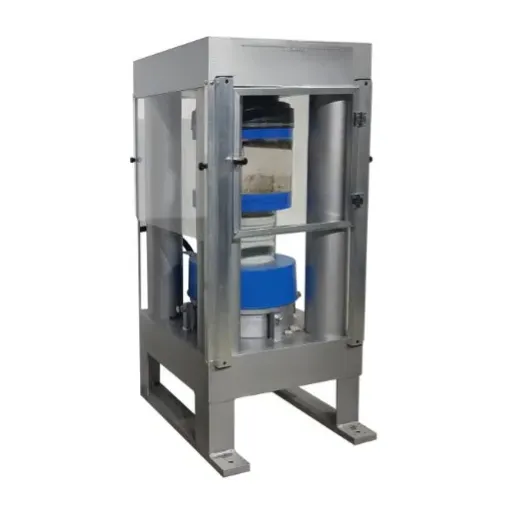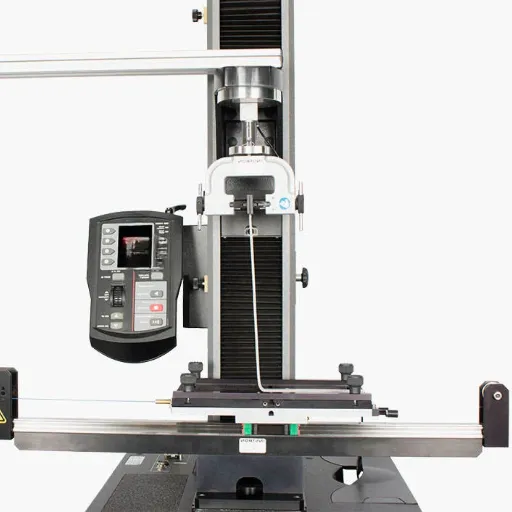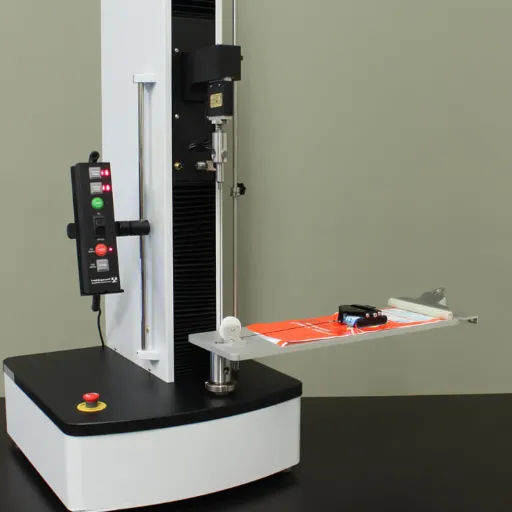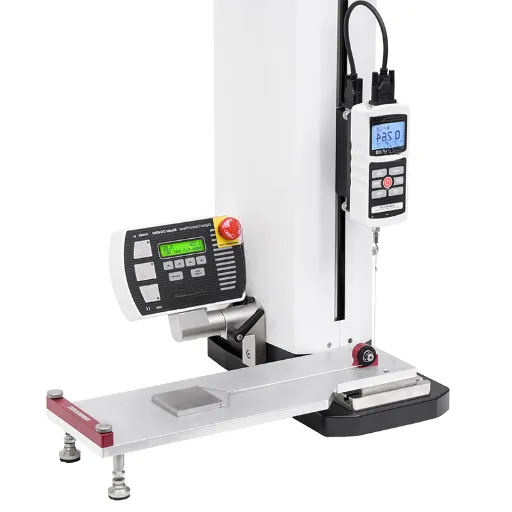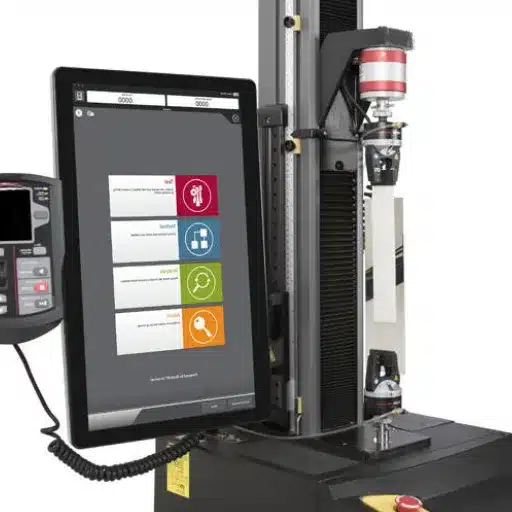Understanding the strength and durability of materials indeed forms one aspect of engineering, construction, and manufacturing. Placed at the center of this testing sits the compression testing machine – a vital piece of equipment used to put together information about materials concerning their behavior under compressive loads. This blog post will cover the compression testing process so one can get an understanding of how buildings remain standing, how automobiles are constructed to absorb shocks and stresses, not to mention how materials are subjected to tests for reliability. Meanwhile, the post will highlight the objectives of such machines, how they operate in general, and the various industry-wide applications of these tests. From this, an understanding of factors affecting structural integrity and material performance will be instilled. Stay tuned as we dig deeper into this important category of testing.
Understanding Compression Testing
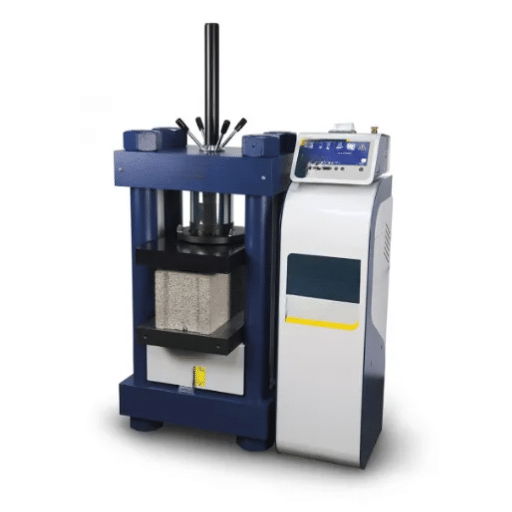
What is a Compression Test?
Compression testing is a method of checking how materials or structures react to compressive forces. In a test, forces are gradually increased and applied to a material in a highly controlled manner until it either deforms, fractures, or reaches a predetermined value limit. The test is designed to check a material’s strength, stiffness, and ability to carry loads without failure.
Typically, one tests for the compressive strength, yield strength, and deformation behavior in such an experiment. Compressive strength would be the maximum stress the material can sustain before breaking, and yield strength is the stress at which the material begins to plastically deform. Along with this information, strain and elasticity can be computed, providing useful information on the physical performance of the material under field conditions.
Basically, the compression tests are carried out in many industrial activities such as construction, automotive, and aerospace, where material safety and durability are of concern. Conduction of this test helps engineers understand the stability provided by concrete, metals, polymers, and composites used in the design of infrastructure or components. Knowing the limits set by compression tests for a material ensures that the structure and products meet the standards of quality and requirements qualities.
Importance of Compression Testing in Material Testing
This test serves as a fundamental test for measuring mechanical properties of materials under compressive forces. Compression testing will give data on strength, stability, and the deformation behavior of materials under compression. Engineers and manufacturers use this information to ascertain that materials can bear loads in their various applications. It would not be possible to ascertain the safety and capability of a given structure or product without this knowledge, and for this reason, compression testing is one of the most vital branches in material testing.
Key Point: A compression testing machine occupies a pivotal position in this process. It subjects a specimen to compression under controlled conditions and measures accurately the response of the material, which includes compressive strength, elastic limit, and finally, failure point. Equipped with highly sensitive instruments and devices to obtain trustworthy data, the records are then studied to verify if the material class meets industry standards. The machines accommodate numerous materials and are versatile enough to test metals, plastics, ceramics, and composites.
As a chief safety consideration and performance specification measure of construction and allied products and structures, materials must be able to bear specific compressive loads in compression testing. Cases of material failure are minimized, thereby guarding against potentially costly repairs or even catastrophes. For industries wherein safety is of prime importance, like construction or aerospace, using an advanced compression testing machine assures compliance with regulations and improves the final products’ durability and reliability.
How Compression Testing Machines Work
In the working of these machines, material samples are placed in compression, and the deflection or change of the material is recorded with that load. The machine logic generally consists of a loading platform, a platen or fixture to tightly hold the sample, and a load cell or force sensor to monitor force. With these devices, the strength of the material can be experimentally determined along with elasticity and failure upon a compressive stress.
- Setup: First, the specimen is placed between the platens.
- Loading: Next, increasing force is gradually exerted on the specimen while recording load and corresponding deformation.
- Data Collection: This information is essential for producing stress-strain curves used in mechanical analysis.
- Control: Compression machines almost always have very fine control systems for applying the force so that variables are not introduced without intention in the testing.
Such presses are instrumental in industries requiring dependable materials and withstanding durabilities. By undergoing compression testing, manufacturers can verify the performance of the material, ascertain the design criteria, or confirm that safety regulations are fulfilled. It does not matter whether they are testing metals, plastics, concrete, or composites; such machines, providing crucial information about a material’s resistance to actual forces, increase safety, efficiency, and durability of the products.
Types of Compression Testing Machines
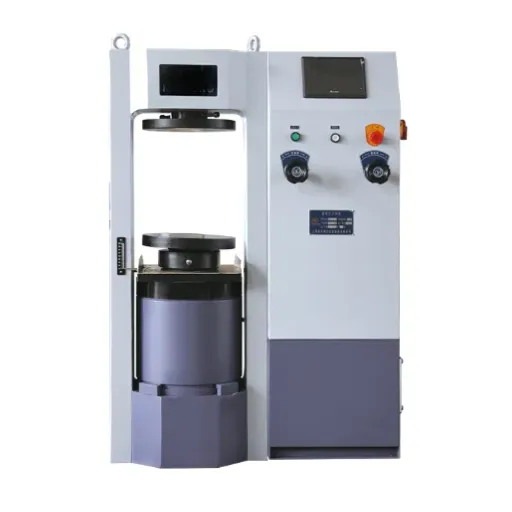
Manual vs. Automated Compression Test Machines
Manual Compression Test Machines
- Operators must handle the set-up, control, and monitoring of their operations
- Usually less expensive and simpler to carry out for more basic uses
- Give the user more control throughout the test
- Need to be watched closely to ensure correct specimen assessment
- Good for everyday tests with smaller volumes and where less precision is needed
Automated Compression Test Machines
- Use sophisticated technical means to perform testing with little human intervention
- Programmed to control their operation, improving repeatability and reducing operator error
- Suited for very high-volume or precision applications
- Provide much more time for consistent testing
- More expensive initially, but efficiency can offset costs
Factors such as the application, frequency of use, and level of accuracy required should be considered in deciding the type of machinery the kit will employ. Instances that involve plain testing procedures and limited number of tests may be suitable for manual machines, while an automated one is more beneficial for frequent tests that require great accuracy and efficiency. In either case, adherence to ASTM standards, including ASTM F883 for performance testing, assures the testing results in accordance with accepted quality standards.
Digital vs. Analog Compression Testing Equipment
| Feature | Analog Equipment | Digital Equipment |
|---|---|---|
| Cost | Less expensive | Higher initial cost |
| Operation | Simple to operate, rugged | Advanced capabilities |
| Data Recording | Manual recording required | Automated data logging |
| Accuracy | Basic accuracy | Precise measurements |
| Features | Basic functionality | Report generation, data analysis |
Digital compression testing equipment appears to offer advanced capabilities like automated data logging, precise measurements, and storing and analyzing test results. If accuracy, consistency, and regulatory bureaus are the utmost important issues in a given industry, these systems would be the right pick. These digital systems further provide software that can enable report generation and ease data management. They might be costly initially but tend to turn around the initial investment into huge payoffs through greatness and reliability, especially in testing situations where high accuracy and great repeatability are required. The appropriate equipment selection is dependent upon the requirements of a specific testing environment, and a trade-off accepted between price and desired performance.
Specialized Machines for Specific Materials
Compression testing machines are used to determine the ability of a material to withstand forces acting upon it in compression. The machines are necessary for determining the strength, deformation, and elasticity of various materials, such as metals, plastics, concrete, and composites. Gradually applying the force and recording the force and displacement provide accurate data concerning the materials with which an engineer is working, thus supporting the choice of materials and quality control in various industries.
Key Components of Compression Testing Machines:
- Loading frame: Guarantees a steady and consistent force application
- Load cell: Records the exact amount of force exerted on the specimen
- Application software: Provides data acquisition and analysis capabilities
Equipment selection depends on the maximum capacity, speed setup, and the precision required. For instance, concrete testing may require a machine with a high capacity, or lighter capacity machines may go for softer materials like plastics. The machinery must strictly adhere to industry standards and safety specs so that it can produce reliable and reproducible results and can be of use for understanding and improving material performance.
Applications of Compression Testing
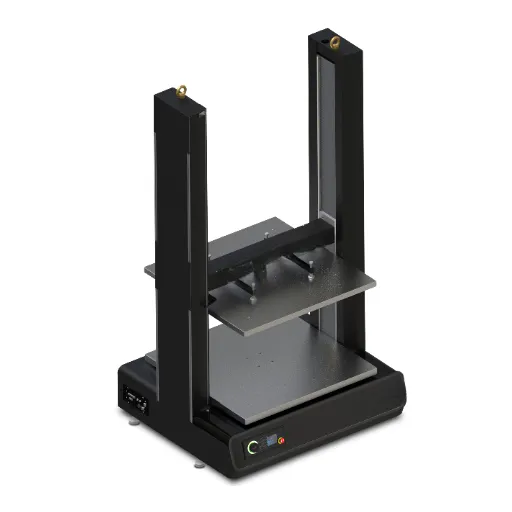
Construction: Ensuring Strength of Concrete
Compression testing in construction is of utmost importance in enabling the determination of concrete strength and durability. Concrete goes into the fabric of bridges, buildings, and foundations where it has to support heavy loads for an extended time. The engineers apply pressure on the material using the compression testing machine to analyse whether the concrete will stand the test of time in construction based on the requisite strength.
Testing Process:
- A specimen, usually a cube or cylinder, is put into the machine
- Pressure is applied until the specimen breaks
- The recorded maximum force that the sample withstands is called its compressive strength
- Results ensure concrete can withstand specified loads and environmental conditions
Such equipment for compression testing has to be very precise and must withstand load applications of a very high order. It undoubtedly has contributed to the quality-testing culture in the construction industry by enabling engineers and builders to design plinths and other structures with confidence. Periodical testing of concrete samples before and during construction phases ensures that materials can optimally meet given specifications, hence making a choice of safety and reliability for the respective infrastructural works.
Manufacturing Applications: Testing Product Reliability
A compression testing machine is a very important equipment in the manufacturing industry, for making sure the quality, strength, and durability of the materials and products. They test how materials withstand forces compressing them, thereby giving vital data on their load-bearing capacity. In this way, manufacturers comply with safety standards, and the product is assured to withstand the stresses exerted on it during usage.
The testing machine subjects the sample to a compressive load that is slowly increased until the sample deforms or fractures. It measures compressive strength, elasticity, and deformation behavior. Large-scale industries such as construction, aerospace, and automobile testing are dependent on these tests to verify that the materials, which may be concrete, metal, plastic, or a composite, that go into their products can withstand required loads without failing.
Benefits of Regular Testing: Regular testing with a compression testing machine helps manufacturers enhance product reliability and keep consistent quality levels. Such tests find any defects early on, thus preventing flaws in production that might lead to costly failures down the supply chain. Hence, this practice increases consumer confidence and ensures regulatory compliance and market fulfillment requirements for rugged and durable products.
Quality Control in Various Industries
Compression testing machines are fundamental to ensuring quality control processes across numerous industries. These machines check and analyze materials for compressive strength, thereby ensuring that products meet performance standards and are indeed safe for their intended applications. Heavy reliance is placed on compression testing in construction, packaging, automotive, and aerospace industries for upholding their products’ durability, efficiency, and reliability.
Construction Industry
Materials such as concrete and bricks are compression tested for strength, ensuring buildings and bridges can bear designed loads.
Packaging Industry
Compression tests determine load-bearing capacity of boxes and containers for product protection during storage and transportation.
Automotive & Aerospace
Components like shock absorbers and safety-critical parts undergo rigorous testing to meet stringent safety standards.
An early identification of weaknesses in the manufacturing process provides these industries some leverage in risk reduction and thereby, better quality assurance with longevity and customers’ assurance. So the use of compression testing machines ensures that the industry maintains quality, safety, and efficiency for countless applications.
Factors Affecting Compression Testing Machine Price
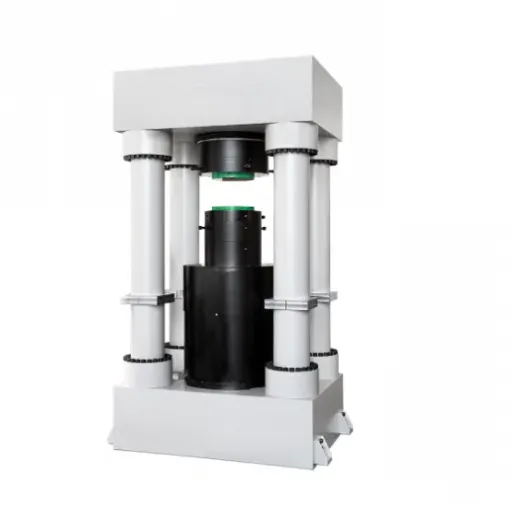
Brand Reputation and Market Position
A brand has its reputation with which the price of a compression testing machine is set. Big brands with a considerable market sell at high prices, justifying their reliability, quality, and after-sales services. These brands must be spending in research and development to improve the functionality of their machines such that it will confirm to industry standards, giving extra features justifying their being termed worthier.
Pricing is also influenced significantly by the market standing of the manufacturer. Those who basically hold the market or work for niche industries usually price their machines higher due to their exclusivity and being perceived as offering advanced performance. Lesser-known brands, however, might offer their products at relatively low prices to attract customers but do prove to be lacking in associated support and durability, typically seen with major companies. Market reviews and user feedback can be very useful for buyers who want to gauge whether the price of a machine falls in line with its actual worth.
Investment Consideration: Buying a compression testing machine ultimately pits reputation and position of the brand versus the consumer’s budget. Customers should weigh the reliability and performance of the equipment in the long run with its cost. Going for a reputed brand will assure them of service availability, quality assurance, and consistent results-the last few being very important when considering applications in industries where safety and precision are of utmost concern.
Technical Specifications and Features
Compression testing machines are applied in situations requiring compressive strength check for the respective material to be guaranteed to perform well or considered safe. However, generally, the key components in such machines go in a sturdy loading frame, a load cell, and the system for control so as to measure or operate accurately. They could either be hydraulic or mechanical systems working in applying pressure uniformly all over the specimen under test for the measurement of compressive strength.
Key Features to Consider:
- Adjustable load capacity: Accommodates different materials and applications
- Digital readouts: Most machines have digital-based systems with software for real-time data recording
- Automatic data logging: Ensures ease of use and accuracy in evaluation
- Safety features: Includes overload protection systems
- Standards compliance: Compatible with ASTM or ISO regulations
The machines are multipurpose and test various materials, namely metals, concrete, plastics, and composites. In selecting the compression testing machine, one should understand his or her testing requirements to achieve the best efficiency and reliability.
Comparative Pricing of Different Models
So, when we look at the prices of compression testing machines, the cost will usually be affected by such major factors as capacity, functionality and additional features.
| Price Category | Features | Best For |
|---|---|---|
| Basic Models | Low capacities, fewer features, suitable for simple testing work | Basic testing applications |
| Mid-Range Models | Moderate load capacity, digital displays, data logging | Balanced functionality and cost |
| Premium Models | Sophisticated data analysis software, automatic control systems, international standards compatibility | Rigorous testing applications requiring optimal accuracy |
Premium-priced high-end models are precision instruments tailor-made for rigorous testing applications. These systems often come with sophisticated data analysis software, automatic control systems, and even international standards compatibility like ASTM or ISO. They are meant for extreme or very specialized testing environments. For those requiring optimal accuracy, repeatability, and compliance, the expensive investment makes sense. Short of evaluating one’s unique testing needs and correlating that with cap on expenditures, the right option has to be chosen, keeping efficiency and cost-effectiveness in mind.
Choosing the Right Compression Test Machine
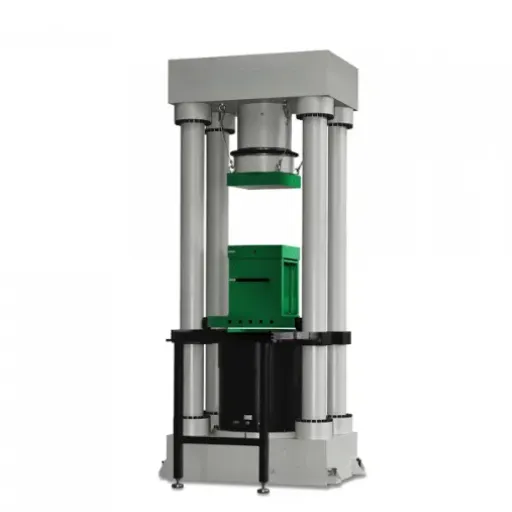
Evaluating Your Testing Needs
Step-by-Step Evaluation Process:
- Material Assessment: Begin by bringing to mind the materials or products that will require testing. Different materials such as metals, plastics, or composites can require varying levels of force capacity and precision.
- Capacity Requirements: Determine the highest load capacity and the size according to the tests that need to be performed.
- Machine Compatibility: Check the dimensions of the machine so it could accommodate your test specimens.
- Feature Requirements: Decide if there should be extra features like data acquisition or software integration necessary while working on the testing process.
Understanding the nature of the materials ensures your machine is equipped to test accurately and never beyond the level of its limitations. The machine must be capable of coping with these forces without any loss of performance. This check might be crucial as you come up with the processing of several sample sizes.
Result recording and analyzing systems bring about huge improvements for efficiency and accuracy. Nowadays, almost all compression testing machines are user-friendly, equipped with advanced reporting systems useful for keeping accurate records and complying with the test standards.
Budget Considerations and Cost-Effectiveness
The compression testing machine budget should be made by keeping in mind the requirements of your testing process. The prices range significantly depending on their capacity, function, and degree of automation. Smaller manual machines are typically cheaper and meant for simple testing, while large investments may be needed for more advanced automated machines with high capacity and precision. Therefore, the consideration of your operational needs will always help to give an appropriate decision on the best value for money.
Long-term Cost Considerations:
Cost-effectiveness does not depend only on the initial purchase price but also, in large part, on the value that the machine ends up creating for you for a long time. Machines that are sturdy, require little maintenance, and operate for an extended period tend to be more economical with time. Furthermore, among machines that have the ability to generate reports and analyze data on their own, you are looking at the possibility of saving time and money on labor, which could then be invested elsewhere.
And at last, consider the scalability and compatibility that the device might feature with new emerging standards. Machines that can be upgraded with extra features or can tie into other last stages of testing systems tend to ask far less for immediate replacement. By balancing the immediate cost by these long-term values and keeping a level on quality and reliability, guarantees will see your compression testing machine scoring at the high-performance end of the scale and being worth every penny out of your budget.
Key Features to Look For in a CTM
While choosing a compression testing machine (CTM) in compliance with ASTM F883 standards, precision and flexibility are significant aspects to consider. ASTM F883 gives certain important specifications and practices for determining the compressive strength of packaging and shipping containers so that they meet the necessary quality requirements. To make sure that necessary tests are done correctly and reliably, a CTM capable of performing the tests in compliance with the ASTM F883 standard would be of utmost importance.
Essential CTM Features for ASTM F883 Compliance:
- Precise force-measuring capabilities: Must offer force measurement across a wide spectrum to accommodate samples of various sizes
- Modern load cells: With automatic calibration systems to increase accuracy and reduce human error
- Data collection and analysis: Built-in software for real-time data recording and comprehensive report generation
- Durable construction: Machine should be specifically designed for long-term reliable application
A CTM must offer precise force-measuring features in accordance with ASTM F883 standards. Such force must range across a wide spectrum to accommodate samples of various sizes so that the results obtained can be said to be consistent and repeatable. Machines with modern load cells and automatic calibration systems shall increase further accuracy and reduce human error in measurements during operation. Look for accuracy within the test tolerances required by ASTM F883.
Also, it is expected the CTM to be marked by provisions for collecting and analyzing data. The very name suggests control systems in which many modern machines come with an interface that is easy to use and built-in software for recording data in real-time, generating comprehensive reports, and easily comparing tests. It also ensures relevance in data and its application to material decision making, regulation compliance, and overall performance tests by complying with ASTM F883 standards. The construction of the machine should also be specifically geared to guaranteeing durable application.
Frequently Asked Questions (FAQ)
Q: For what specific purposes is the compression testing machine used?
A: The principal materials whose compressive strength can be measured using the compression testing machine are concrete, metals, and composite materials. It is essential in material testing and verification for performance guarantee and safety compliance of the final products. Construction and materials science industries use compressive tests to measure the strength and longevity of a plethora of materials subjected to compressive forces.
Q: In what way does the compression testing machine function?
A: The operation of a compression testing machine starts with applying a compressive force on the test sample, which continues until the test sample either reaches the stipulated load or fails. The compressive force is applied through compression platens, and the force is quantified with a load cell. With the aid of a compression testing machine, the compressive strength and yield point of the specimen can be ascertained, which is vital for the designers and manufacturers.
Q: What is the median price for a compression testing machine?
A: Looking at the cost of a compression testing machine, the cheapest models might start at a few thousand dollars, but premium models, especially with digital and dual functionalities, may cost significantly more. Advanced dual-function machines as well as those having extra features, higher capacities, and from top brands also cost more. A compression testing machine price is dependent on the type, features, capacity as well as the brand of the machine.
Q: What standards govern compression tests?
A: Tests for compression undergo a variety of testing standards on both an international and a country level such as ASTM, ISO, and EN standards. These standards cover testing procedures, equipment calibration, and other testing parameters that are needed to deliver reliable and accurate results when testing for the compressive strength of materials.
Q: What types of materials can be tested using a compression testing machine?
A: The compression testing machine can be regarded as a multifunctional testing machine because a wide range of materials such as concrete, metals, plastics, and even composite materials can be tested. The testing of the compressive strength of concrete beams for construction is an important use, as well as other concrete materials, that need to be tested for their compressive strength.
Q: Can a tensile test also be conducted on compression testing machines?
A: While a compression testing machine is designed specifically for performing compression tests, it has been observed that universal testing machines (UTMs) for both compression and tensile tests. Such dual function testing machines provide the ability to conduct a more complete testing of the material, which includes both the compressive as well as tensile strength.
Q: What is the significance of using hydraulic systems in compression testing machines?
A: Smooth loading with consistent loading rates is a key requirement in material testing to ensure accurate strength measurement. Hydraulic systems in compression testing machines contribute to this by enabling constant low loading rates to be maintained as specified in testing standards. In addition, such systems may add functionalities that store information for traceability and quality, enhancing the reliability of the test results.
Q: How is the concrete’s compressive strength determined using a compression testing machine?
A: The compressive strength of concrete is calculated by testing the concrete specimen in a cylinder mold, which is then placed between the compression platens. The machine applies the load until the specimen fails. The compressive strength is then calculated by dividing the maximum load by the cross-sectional area of the specimen. This is a crucial concrete property for the structural evaluation of concrete components.
Q: What are the benefits of using digital compression testing machines?
A: Manufacturers and engineers rely more on digital compression testing machines for their ease of use, accuracy, and advanced functionalities, such as tests monitoring in real-time. In addition, such machines enable true automation of the entire testing process and facilitate compliance with testing standards.
Q: What are the different types of compression testing machines available?
A: There are a number of different types of compression testing machines available, such as manual, hydraulic, and digital machines. Each of these different types of machines has its own benefits, such as hydraulic machines which are appreciated for their precision and capacity as well as digital machines which are well known for their features for data management and analysis. In addition, certain machines specialize in testing concrete beams and other machines that test metals and composites.
References
- Used Compression Testers For Sale – Surplus Record
Lists new and used compression testers available for purchase. - Compression Testing Machines – NL Test
Explains the uses of compression testing machines for testing compressive strength. - Compression Test: Definition, Purpose, Applications – Xometry
Discusses the purpose and applications of compression tests in material analysis. - Compression Testing Machines | Strength Testing – Forney
Details the functionality and applications of compression testing machines, particularly for concrete.

